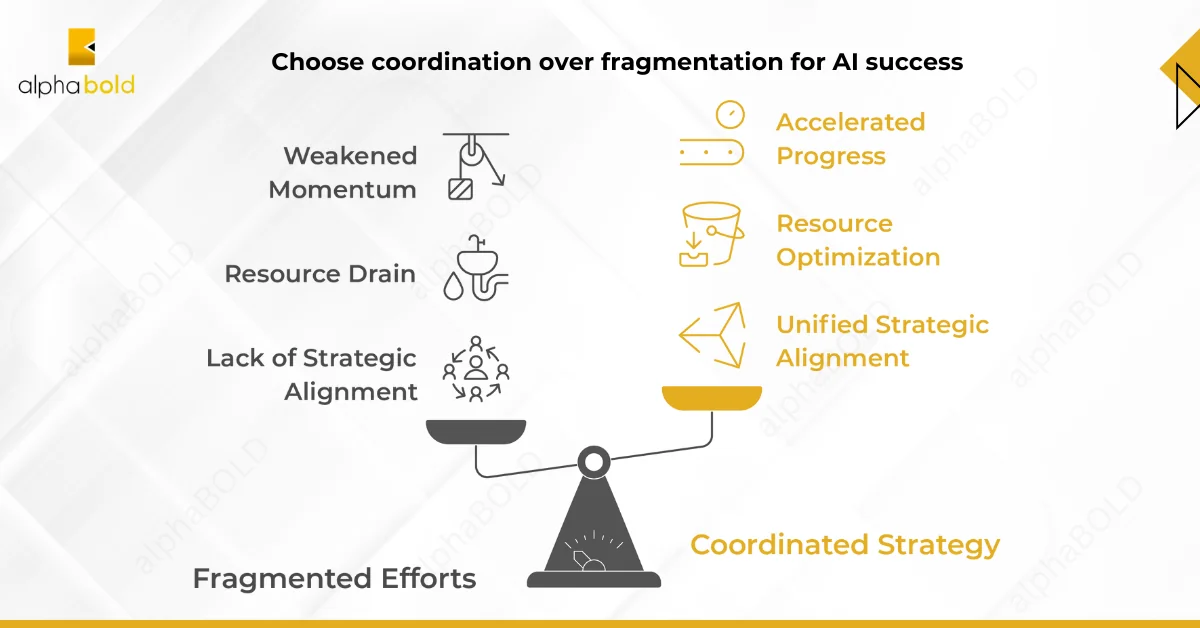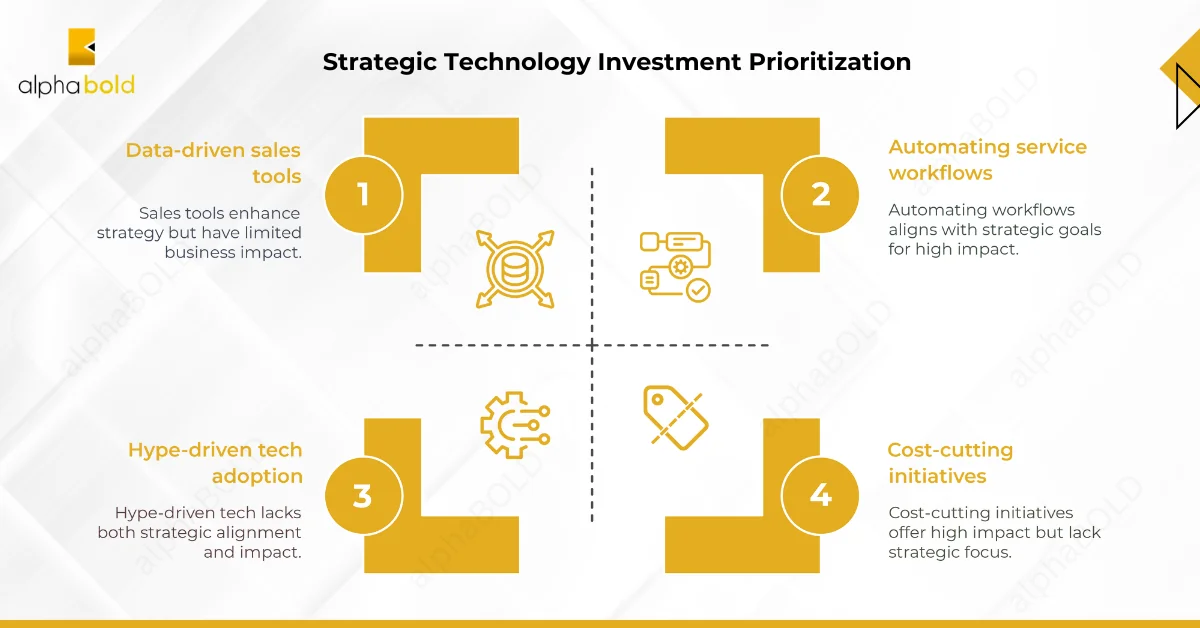Table of Contents
Introduction
Generative AI is no longer just a proof of concept—it’s a business imperative, and Chief Information Officers (CIOs) are at the helm of scaling it with purpose and precision. Organizations must realize tangible value from their investments. However, while initial projects often begin with excitement and potential, turning them into lasting, impact-driven solutions requires a deliberate and strategic approach.
Simply following the hype isn’t enough—smart decision-making is key to generating measurable outcomes and driving growth. As CIOs take on broader responsibilities, their strategies must evolve to meet this new frontier. The real challenge lies in aligning innovation with business objectives, managing costs, optimizing data infrastructure, and integrating new technologies into daily operations. The journey from pilot to enterprise rollout is complex, but the potential rewards are significant.
Truths Every CIO Must Know for Successfully Scaling Generative AI
Let’s explore seven critical truths that every CIO must understand to scale Generative AI effectively. These insights will provide a roadmap for overcoming common pitfalls, optimizing AI investments, and positioning your organization for long-term success.
1. Purposeful Investment: Aligning Technology with Real Business Impact
Organizations can no longer afford to chase hype-driven tech or jump on trends without purpose. Scaling Generative AI offers transformative potential, but for CIOs, the key lies in strategic, outcome-focused investments. Success starts by aligning innovation efforts with specific, measurable business goals rather than indulging in low-impact experimentation.
CIOs must prioritize initiatives that solve real challenges—streamlining operations, improving customer experience, or fueling product innovation. For example, platforms that automate service workflows can cut costs and boost satisfaction, while data-driven tools for sales teams can sharpen decision-making and increase revenue.
Scaling successfully means choosing the right capabilities at the right time. Setting clear KPIs ensures initiatives stay focused and accountable, turning innovation into measurable impact.
2. Coordinated AI Adoption: Avoiding Fragmented Efforts

A CIOs biggest challenges when scaling Generative AI is often involves avoiding fragmentation. In a rush to innovate, organizations often launch isolated pilots that lack strategic alignment or cross-functional impact.
Disconnected efforts create confusion, drain resources, and weaken organizational momentum. Instead, CIOs must guide adoption through a unified strategy—ensuring that initiatives complement existing systems, enhance team workflows, and drive consistent progress toward business goals.
AI investment for business success begins with thoughtful planning:
- Define use cases
- Align departments
- Map projects to enterprise objectives
A coordinated approach strengthens collaboration and accelerates enterprise-wide scalability.
Navigate the Future with Confidence
Learn how to build a robust data strategy that fuels Generative AI innovation and ensures regulatory compliance.
Request a Consultation3. Seizing the Moment: Act Quickly to Gain a Competitive Advantage
CIOs must act decisively to capitalize on emerging AI opportunities. While others remain stuck in pilot mode, the frontrunners launch early, iterate fast, and build momentum through continuous improvement. Early adoption offers a chance to lead—delivering scalable, high-impact solutions that drive real business value.
Waiting for the “perfect” conditions often means falling behind. Acting now allows organizations to test, refine, and adapt to changing market dynamics.
By adopting earlier, CIOs can capitalize on the data at their organization’s core—creating a foundation for AI applications that evolve and improve with each iteration. This approach enables organizations to adjust to market demands quickly, respond to new opportunities, and stay ahead of the competition.
4. Start Small, Scale Smart: Build AI Ecosystems Incrementally
One of the most common mistakes organizations make when scaling Generative AI is starting too big and attempting to roll out monolithic systems from day one. Instead, CIOs should begin with smaller, focused efforts and expand them strategically.
A modular approach allows teams to deliver quick wins while laying the groundwork for broader transformation. Whether it’s automating customer support or improving product recommendations, the goal is to launch targeted, high-impact initiatives that align with business objectives and demonstrate value early.
Growth should be incremental, with each project building on lessons learned. This ensures that the overall system evolves in a stable, manageable way—driven by outcomes, not hype.
5. Smart AI Investment: Maximize Impact While Minimizing Costs

The financial landscape around AI is shifting. Generative AI implementation can potentially drive significant returns, but only if organizations invest strategically. CIOs must recognize that AI models account for only a fraction of the overall AI expenses and that focusing on minimizing operational costs can maximize the overall impact of AI initiatives.
Every investment should be evaluated through a cost-benefit lens to ensure resources are directed toward high-impact initiatives. Scaling requires discipline: tracking expenses, optimizing workflows, and preventing value dilution.
A well-informed strategy controls costs and builds a culture of thoughtful experimentation—where outcomes, not overspending fuel innovation.
6. Focus on the Right Data: Building a Robust Data Strategy
Going forward, the emphasis should be on quality over quantity. CIOs must ensure that their organizations collect large volumes of data and curate the right data to fuel meaningful AI insights and actions.
A strong data strategy begins with clarity: What information matters most? How is it managed, secured, and made accessible across teams? Robust data pipelines, supported by governance and compliance frameworks such as GDPR, HIPAA, or CCPA, create the conditions for scalable, value-driven solutions.
As business demands evolve, data must remain accurate, relevant, and aligned with strategic goals. A resilient foundation allows digital initiatives to grow with consistency and purpose.
7. Countering Challenges: Building Consensus and Navigating Obstacles
Scaling Generative AI comes with its share of challenges—from technical setbacks to internal pushback. CIOs must navigate these hurdles with a mix of agility, diplomacy, and strategic foresight. Success isn’t about being right all the time—it’s about building alignment across departments and responding quickly to change.
Driving transformation requires cross-functional support. CIOs must communicate vision, value, and progress to technical and business audiences. Gaining trust and clarity around priorities is key to sustained momentum.
A culture of experimentation—one that welcomes iteration and learning—is essential for long-term success. With the right mindset and leadership, organizations can overcome roadblocks and scale confidently.
Conclusion
Successfully scaling Generative AI isn’t a one-off project—it’s a continuous, strategic journey. CIOs who take a thoughtful approach—starting small, investing wisely, prioritizing meaningful data, and leading through change—can build lasting momentum.
The road ahead is filled with both complexity and opportunity. But with clear direction, strong alignment, and a culture that values experimentation, organizations can turn innovation into measurable business value.
The future will belong to those who move purposefully and build responsibly, transforming potential into progress at every stage.
Maximize ROI on Your AI Projects
AlphaBOLD can help you navigate the complexities of AI investment with our proven methodologies. Discover how to align your spending with strategic business goals.
Request a ConsultationExplore Recent Blog Posts






